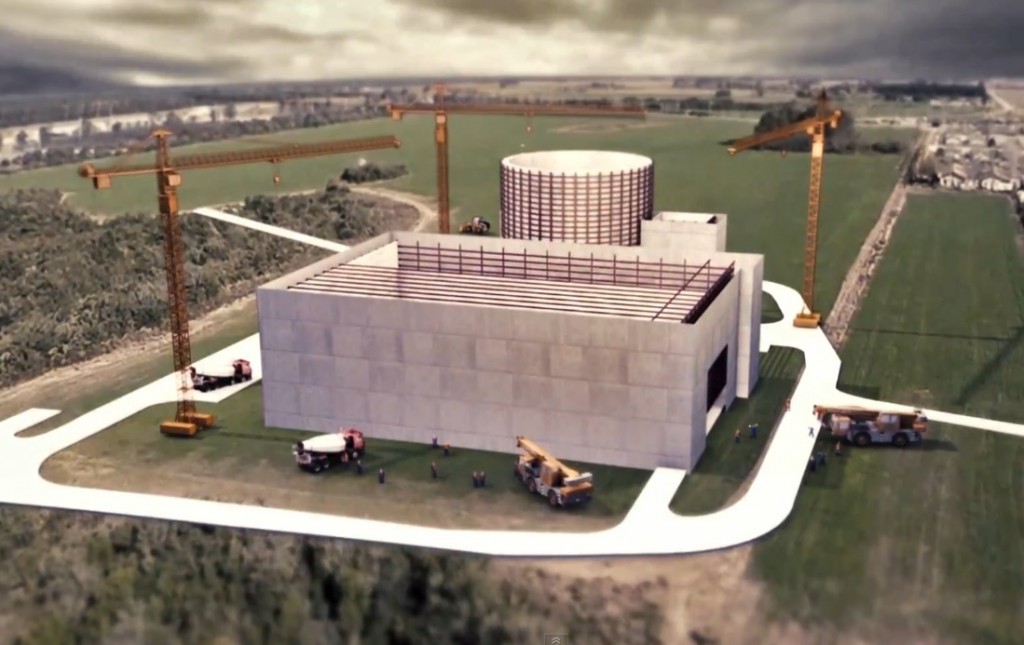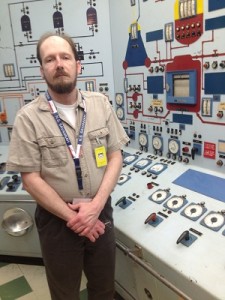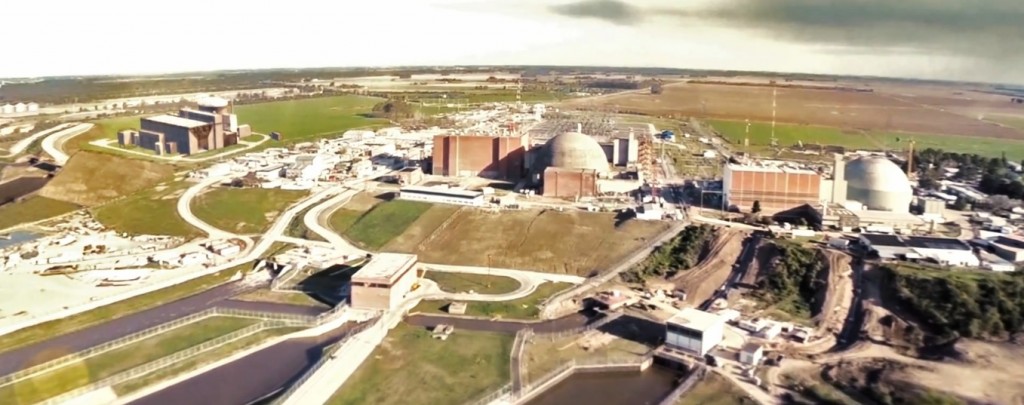Just yesterday, Nucleoelectrica Argentina released a video (subtitled in English and Chinese) showing the location and construction of this new nuclear plant-a plant that not only marks a step forward for Argentina, but in the bigger picture a step forward for China's desired goal of widely exporting nuclear power plants.
Click here to see the video on Nucleoelectrica Argentina's YouTube channel.

Nucleoelectrica Argentina S.A. image of Atucha III, a CNNC/CANDU plant, under construction.
Atucha III's construction is expected to last eight years, and is a joint project between Nucleoelectrica Argentina, China National Nuclear Corporation, and Industrial and Commercial Bank of China. Nucleoelectrica Argentina will act as both owner-operator and architect-engineer, with CNNC providing "technical support, services, equipment and instrumentation" as well as materials that will ultimately be fabricated into parts in Argentina. The reference plant for the Atucha III design is the Qinshan CANDU-6.
In March of this year, Nucleoelectrica Argentina proudly announced the 40th anniversary of Atucha I, which it describes as "the first nuclear electric generating plant in Latin America." The company expects to build yet another, still unspecified large commercial unit at the same site in the future, according to World Nuclear Association.
For More Information: Click here to see World Nuclear Association's paper on Argentina's nuclear energy program.
 Will Davis is the Communications Director for the N/S Savannah Association, Inc. where he also serves as historian, newsletter editor and member of the board of directors. Davis has recently been engaged by the Global America Business Institute as a consultant. He is also a consultant to, and writer for, the American Nuclear Society; an active ANS member, he is serving on the ANS Communications Committee 2013-2016. In addition, he is a contributing author for Fuel Cycle Week, and writes his own popular blog Atomic Power Review. Davis is a former US Navy reactor operator, qualified on S8G and S5W plants. Davis is temporarily managing all social media for the American Nuclear Society.
Will Davis is the Communications Director for the N/S Savannah Association, Inc. where he also serves as historian, newsletter editor and member of the board of directors. Davis has recently been engaged by the Global America Business Institute as a consultant. He is also a consultant to, and writer for, the American Nuclear Society; an active ANS member, he is serving on the ANS Communications Committee 2013-2016. In addition, he is a contributing author for Fuel Cycle Week, and writes his own popular blog Atomic Power Review. Davis is a former US Navy reactor operator, qualified on S8G and S5W plants. Davis is temporarily managing all social media for the American Nuclear Society.












